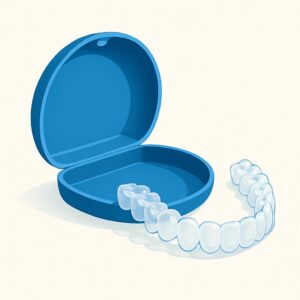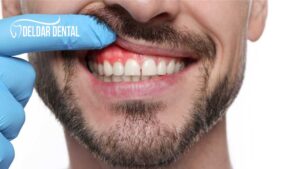Vertigo is a condition wherein the patient experiences dizzy spells. It feels as if the whole world is spinning and swaying. Temporomandibular Joint Disorder (TMD) impact the facial muscles and bones. The Temporomandibular joint is the hinged connection between the jaw and the temporal bones of the skull. It’s located in front of the ears. This joint facilitates opening and closing of the mouth, chewing, yawning, talking and moving the jaw from side to side.
How are vertigo and TMD related?
The human body is able to maintain its balance based on information received from 2 main sources: 60% from the vestibular system at inner part of the ears and the other 40% from visual information. The brain collects data from the stretch receptors of various joints and muscles. The data from all these sources has to integrate. If the vestibular system malfunctions, it sends conflicting signals to the brain. These signals do not align with those received from the eyes and the joints and muscles. There is a mismatch and the person may feel pulled to one side or experience a spinning, swaying and tilting sensation. This causes loss of balance and often results in a fall.
Vertigo is a highly debilitating condition and can severely impact your quality of life. It prevents the patient from doing mechanical or physical work such as driving, climbing up and down stairs.
About the jaw joint – TMJ
The temporomandibular joint is very close to the inner ear (which houses the vestibular system responsible for balance). Insert your little finger into your ear and move your jaw up and down and side to side. You will definitely feel the movements of the mandible (lower jaw) through your ear. Even a slight misalignment in the muscles and bones of jaw can exert pressure on the vestibular system and cause vertigo (dizziness).
The inner ear is formed by the labyrinth – which is a hollow cavity in the temporal bone of the skull. The labyrinth has three semi-circular canals located in three planes – posterior, horizontal and the superior. These canals contain fluid sacs – the movement of this fluid is detected by hair-like receptors. The fluids move if the head moves. The receptors detect the motion of the fluid and send corresponding signals to the brain. This enables us to maintain orientation in a three dimensional space! TMD exerts pressure on the labyrinth and causes the fluids to move in an unnatural motion. This swaying, tilting and spinning motion of the fluids make the person feel as if the world around him/her is spinning.
A team of Korean medical researchers studied the effects of TMD on the vestibular system. They introduced an inflammatory agent to the Temporomandibular joint and observed increased activity in the vestibular nuclei.
Many people learn to live with vertigo – they learn to accept the condition or simply hope that it will go away on its own. Vertigo and TMD are curable by oral appliance therapy and neuromuscular treatment. To learn whether Dr. Deldar can give you relief from your ongoing dizziness, hearing loss, or other ear problems, please contact Deldar Dental in Noblesville, IN at (317) 208-0000 or send him a message.




